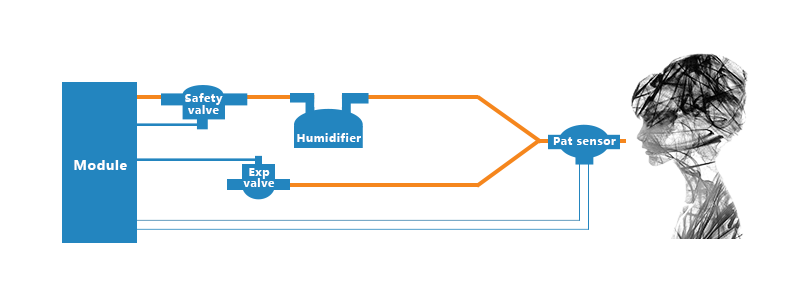
Proximal Flow Sensors are widely used in respiratory devices for intubation patients and non-invasive ventilation patients in hospitals, home care situations and emergency rooms. With applications ranging from neonatal to adult care, the associated requirements for proximal flow sensors are both diverse and challenging. Sensors must be reliable and cost-effective while offering long-term stability – in addition to a host of other characteristics. Proximal flow sensors also have particularly high requirements with regard to hygienic sterilization due to the patient’s contact with air, which can potentially be infected with pathogens.
One safe and cost-effective alternative (in terms of total cost of ownership) for reusing sensors might be a single-use/single-patient-use proximal flow sensor.A fully calibrated sensor helps to save time for the hospital stuff so that they can focus on other tasks.
Thanks to their excellent stability, flow sensors placed in the proximal configuration will yield a very fast response and high sensitivity. With expiratory positioning of the flow sensor, the stability and sensitivity are the same. The same time, Proximal sensing is less affected by leaks further down the breathing circuit.
In the case of single-limb circuits, the expiration flow can only be measured when a proximal flow sensor is used; otherwise only the inspiratory flow is known, and the number of available ventilation modes is limited. With a dual-limb circuit, either a proximal or expiratory flow sensor solution might be used. Proximal flow sensing has some advantages in terms of trigger sensitivity due to the close proximity to the patient.
So CHENWEI MEDICAL new device of CWH-8010 provides two types of Proximal Flow Sensors, one for use in adult and child, and one for newborns that requires the replacement of a specialized proximal flow sensor when it used; where appropriate, Proximal placement yields the highest-possible trigger sensitivity, whereas expiratory placement helps control the variety of inlet conditions, in turn yielding the most accurate flow readings. The proximal flow sensor bidirectionally measures the flow of air and other non-aggressive gases with excellent accuracy and extremely high speed. And also this type has a price advantage in the turbine device.